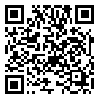Volume 13, Issue 5 (September & October 2022)
BCN 2022, 13(5): 709-718 |
Back to browse issues page
Download citation:
BibTeX | RIS | EndNote | Medlars | ProCite | Reference Manager | RefWorks
Send citation to:



BibTeX | RIS | EndNote | Medlars | ProCite | Reference Manager | RefWorks
Send citation to:
Motaghed M, Sanooghi D, Bagher Z, Faghihi F, Lotfi A, Shahbazi A et al . In Vitro Assessment of the Gene Expression of EZH-2 and P300 During Motor Neuron Differentiation of Human Umbilical Cord Blood Mesenchymal Stem Cells. BCN 2022; 13 (5) :709-718
URL: http://bcn.iums.ac.ir/article-1-1984-en.html
URL: http://bcn.iums.ac.ir/article-1-1984-en.html
Marjaneh Motaghed1 

 , Davood Sanooghi2
, Davood Sanooghi2 

 , Zohreh Bagher3
, Zohreh Bagher3 

 , Faezeh Faghihi *1
, Faezeh Faghihi *1 

 , Abolfazl Lotfi4
, Abolfazl Lotfi4 

 , Ali Shahbazi5
, Ali Shahbazi5 

 , Mohammad Taghi Jogataei1
, Mohammad Taghi Jogataei1 




 , Davood Sanooghi2
, Davood Sanooghi2 

 , Zohreh Bagher3
, Zohreh Bagher3 

 , Faezeh Faghihi *1
, Faezeh Faghihi *1 

 , Abolfazl Lotfi4
, Abolfazl Lotfi4 

 , Ali Shahbazi5
, Ali Shahbazi5 

 , Mohammad Taghi Jogataei1
, Mohammad Taghi Jogataei1 


1- Cellular and Molecular Research Center, Iran University of Medical Sciences, Tehran, Iran.
2- Department of Genetics, School of Biological Sciences, Shahid Beheshti University, Tehran, Iran.
3- ENT and Head and Neck Research Center and Department, Five Senses Institute, Hazrat Rasoul Akram Hospital, Iran University of Medical Sciences, Tehran, Iran.
4- Damavand Agricultural College, Technical and Vocational University, Tehran, Iran.
5- Department of Neuroscience, School of Advanced Technologies in Medicine, Iran University of Medical Sciences, Tehran, Iran.
2- Department of Genetics, School of Biological Sciences, Shahid Beheshti University, Tehran, Iran.
3- ENT and Head and Neck Research Center and Department, Five Senses Institute, Hazrat Rasoul Akram Hospital, Iran University of Medical Sciences, Tehran, Iran.
4- Damavand Agricultural College, Technical and Vocational University, Tehran, Iran.
5- Department of Neuroscience, School of Advanced Technologies in Medicine, Iran University of Medical Sciences, Tehran, Iran.
Abstract:
Introduction: Maintenance of neurogenesis depends on the function of some histone-modifying enzymes; including Enhancer of zeste homolog 2 (EZH2) and histone acetyltransferases (P300). The mechanism of epigenetic regulation and gene expression underlying the transition of human umbilical cord blood mesenchymal stem cells (hUCB-MSCs) into MNs has not been fully clarified.
Methods: Two morphogens; sonic hedgehog (Shh: 100 ng/mL) and retinoic acid (RA: 0.01 mM) were involved in the specification of hUCB-MSCs into MNs after MSC characterization using Flow cytometry. Real time-quantitative PCR and immunocytochemistry were performed to find the expression of the genes at the level of mRNA and protein.
Results: The expression of MN-related markers was confirmed at the level of mRNA and protein by induction of differentiation. The results were confirmed by immunocytochemistry and showed those mean cell percentages of 55.33%±15.885% and 49.67%±13.796% could express Islet-1 and ChAT, respectively. The gene expression level of Islet-1 and ChAT was significantly increased in the first and second week of exposure, respectively. After two weeks, the expression level of P300 and EZH-2 genes increased remarkably. No significant expression of Mnx-1 was detected when compared to the control sample.
Conclusion: MN-related markers, Islet-1 and ChAT, were detected in differentiated cells of hUCB-MSCs, supporting the potency of cord blood cells in the regeneration of MN-related disorders. Assessing these epigenetic regulatory genes at the protein level can be suggested to confirm their functional epigenetic modifying effects during motor neuron differentiation.
Methods: Two morphogens; sonic hedgehog (Shh: 100 ng/mL) and retinoic acid (RA: 0.01 mM) were involved in the specification of hUCB-MSCs into MNs after MSC characterization using Flow cytometry. Real time-quantitative PCR and immunocytochemistry were performed to find the expression of the genes at the level of mRNA and protein.
Results: The expression of MN-related markers was confirmed at the level of mRNA and protein by induction of differentiation. The results were confirmed by immunocytochemistry and showed those mean cell percentages of 55.33%±15.885% and 49.67%±13.796% could express Islet-1 and ChAT, respectively. The gene expression level of Islet-1 and ChAT was significantly increased in the first and second week of exposure, respectively. After two weeks, the expression level of P300 and EZH-2 genes increased remarkably. No significant expression of Mnx-1 was detected when compared to the control sample.
Conclusion: MN-related markers, Islet-1 and ChAT, were detected in differentiated cells of hUCB-MSCs, supporting the potency of cord blood cells in the regeneration of MN-related disorders. Assessing these epigenetic regulatory genes at the protein level can be suggested to confirm their functional epigenetic modifying effects during motor neuron differentiation.
Type of Study: Original |
Subject:
Cellular and molecular Neuroscience
Received: 2020/11/4 | Accepted: 2021/03/1 | Published: 2022/09/11
Received: 2020/11/4 | Accepted: 2021/03/1 | Published: 2022/09/11
Send email to the article author
| Rights and permissions | |
 |
This work is licensed under a Creative Commons Attribution-NonCommercial 4.0 International License. |





